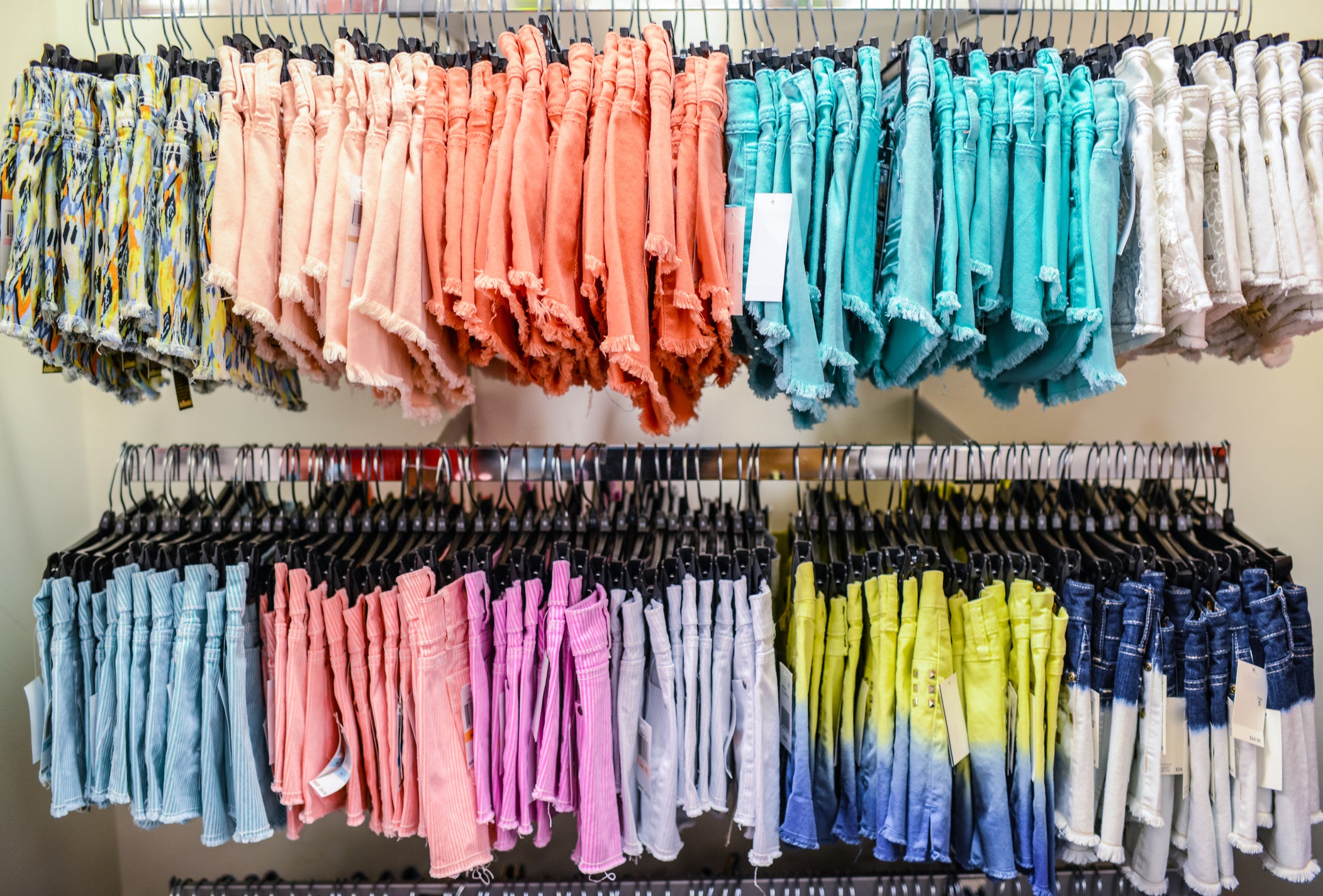Two Things Sustainability Experts Want You to Do About Fast Fashion

(Photo: anouchka / Getty Images)
Fast fashion now accounts for 88 percent of the American clothing industry and it makes a huge impact on the environment. Garments hit store shelves quickly – and are discarded just as quickly, with studies showing that most fast fashion garments are thrown in the trash after just six wears, due to damage or irrelevance. The business is built on overconsumption, but we as consumers can demand change.
“Many people buy fast fashion clothing and never wear any of the items as their purchasing is unhindered by cost,” explains Carly Hobbs, sustainability expert and founder of sustainable living blog, My Green Toddler. Those prices stay low by relying on inexpensive, low-quality materials that are destined to wind up in landfills and low wages for garment workers which may even violate United Nations Sustainable Development Goals.
1. Be Skeptical of Fast Fashion Retailers Claiming to Go Green
Certain brands and companies that have made marginal changes over the years – but according to Hobbs, the small steps toward a more eco-friendly form of fast consumption is simply to mitigate consumer guilt rather than make real change toward a more sustainable future.
“Some fast fashion brands like H&M and Zara have started offering clothing recycling to return old garments and ‘conscious choice’ clothing ranges that include a small portion of recycled materials but this is 100 percent greenwashing,” says Hobbs.
The clothing recycling returns simply allows people to clear out their wardrobes to make space for their next short life span purchases and feel a little better about not throwing them away. The ‘conscious choice’ ranges are also misleading as such a small percentage of the materials are recycled and were likely unethically produced. Plus, Hobbs says, “these types of collections only consist of a few items compared to the thousands of completely unsustainable garments on offer.”
Brands genuinely shifting to fully recycled or biodegradable fabrics are rare because production of eco-friendly textiles remains very expensive and demand isn’t yet very high.
“I don’t think fast fashion can ever be sustainable unless the idea of fast fashion really changes,” says Craig Miller, an environmentalist who studies the industry. “For decades, fast fashion has produced millions of tons of textiles that end up in garbage dumps, sewers, and even in the ocean, just because fashion changes every season.”
In his mind, the best approach is normalizing shopping for slower, higher-quality items.
“Designers and influential fashion personalities should push for fashion that will last for more than one season so consumers won’t be pushed to change their wardrobes and throw away clothes they have only used for a few times,” says Miller. “Only then can fashion become sustainable.”
2. Change How You Think About Fast Fashion and Shopping
So what can we as eco-minded consumers do, especially if the prices of high-end, ‘slow fashion’ brands are out of reach or designer boutiques don’t stock inclusive sizing? We can try to break our own cycles of overconsumption.
Part of that means learning what makes garments high-quality and long-lasting, and how to look for those traits when shopping. Start by prioritizing materials. Seek out natural fibers, like cotton or linen, for example – something that is possible even when looking through the racks of your local Zara or Uniqlo – and ideally find items made from materials that have been independently certified as ethically sourced.
Also, try shopping in second-hand stores, swapping clothing you’re no longer into rather than putting it in the trash, and consider buying less trend-driven clothing altogether. All of these actions avoid the current speed- and churn-focused business model without driving up your clothing budget or requiring you turn your back on mainstream retailers entirely.
And there is some good news for the future of affordable fashion. Joy Orah, CEO and founder of Dubai-based fashion brand, ÚCHÈ By Amber, believes that fast fashion will eventually have no choice to become sustainable – if and when the industry and consumers drop the ‘fast’ and instead focus on stylish garments that will last for many seasons.
“The percentage of consumers expressing interest in more ethical fashion brands is growing as more and more shoppers become aware of the impact,” says Orah. “I believe that in the future fast fashion brands will have no choice but to switch to a more sustainable business model in order to cater to the growing demand.”
RELATED: 10 Sustainability Certifications to Look for When Shopping
Get more of what you love from VT. Follow us on Instagram, Facebook, and Twitterand sign up for our email newsletters.